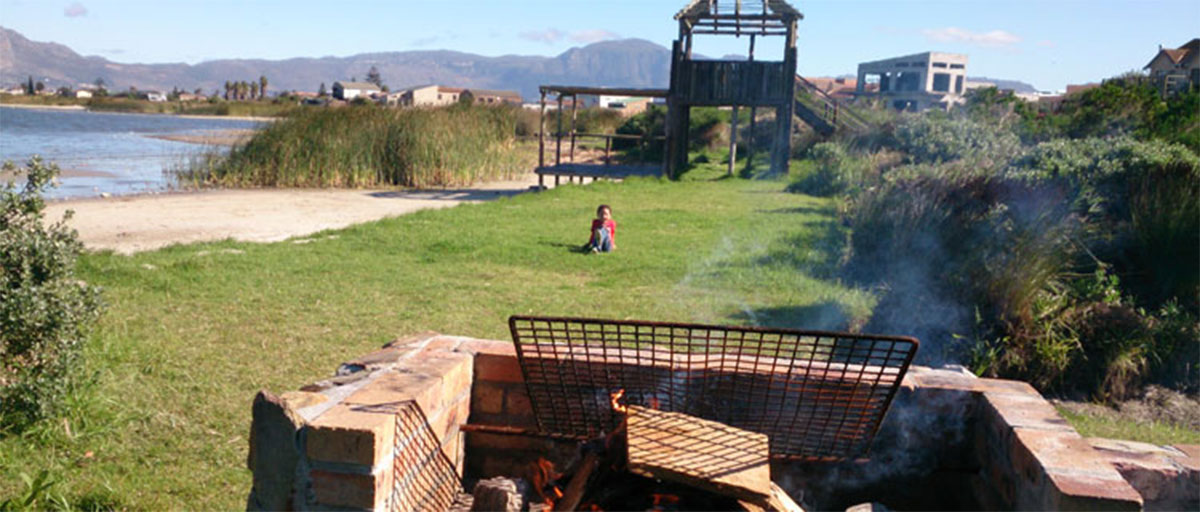
The Bottom Road area in Cape Town is highlighted in a new article as an example of how urban green commons can support biodiversity conservation and reconnect urban dwellers to nature. Photo: The Bottom Road Sanctuary
Civic restoration
This land is your land...
Urban green areas managed by citizens can reduce ecosystem management costs and help people reconnect to nature
- Study finds urban green areas actively managed by citizens can reduce management costs and help residents reconnect to nature
- Balance and diversity of commons’ activities is required for community-management of common urban green space
- Policymakers should support bottom-up initiatives, where participants ultimately carry the projects forward
When you enter Bottom Road in Grassy Park, Cape Town, you enter a thriving example of how a civic-led ecological restoration project could look like. The story about Bottom Road is a story about how citizens in areas of post-apartheid Cape Town have gone from being social nobodies to inspirational stewards of nature conservation.
In 2005 the City of Cape Town sold out land close to a seasonal lake and wetland area in the southern parts of Cape Flats. The land was bought mainly by residents who had grown up in neighbouring Grassy Park.
The residents quickly saw the potential of beautifying the area and create a "community spirit" where people could walk around freely and meet, a vision far from conventional planning based on high security walls and low community feeling.
Today some 50,000 plants have been planted, attracting not only pollinators and birds, but also people. Politicians have also become increasingly keen on blending in with people wanting to change how urban ecology is done in Cape Town.
"The enthusiasm and strong community feeling has helped the Bottom Road Sanctuary to become a competent and respected actor in merging community and ecological rehabilitation"
Henrik Ernstson, co-author
For three years Henrik Ernstson followed the development of Bottom Road and witnessed how a grass root initiative turned a left-behind area into a thriving residential haven.
Committed and cheap
The story of Bottom Road is one of three case studies highlighted in a new study recently published in Global Environmental Change. Centre researchers Johan Colding, Henrik Ernstson, Stephan Barthel and other colleagues from the Netherlands and Sweden looked at so-called 'urban green commons'; parks, community gardens and vacant lots nurtured and managed collectively by a city's residents and citizens. In addition to the case in Cape Town, they also looked at allotment areas in Stockholm and community gardens in Berlin.
What they found was that urban green areas actively managed by citizens can reduce costs for ecosystem management and help city slickers reconnect to nature.
"Designs of urban green areas that are run by the users themselves provide important spaces where people can engage with urban nature and effectively counterbalance detachments from nature in cities," lead author Johan Colding says.
"Many urban green commons can also reduce management costs on public land because management is volunteer-based and driven by the self-interest of the participants," he says.
When is it big enough?
As for the actual running of the areas, a certain level of property rights diversity is necessary in order to match people's preferences to participate in urban green commons. For example, many find it hard to partake in formalised, organised commons like allotment gardens which require considerable commitment.
As a consequence, a relevant question is how far should and could these commons be up-scaled before they become bureaucratic and over-organised? Furthermore, how many people can participate before it becomes too big for its own good?
As a pointer, the authors conclude, policy makers should facilitate more than implement, supporting bottom-up driven initiatives such as the one in Cape Town, in recognition that it is ultimately the participants themselves that hold the means to carry such projects forward.
Citation
Colding, J., et al., Urban green commons: Insights on urban common property systems. Global Environ. Change (2013), http://dx.doi.org/10.1016/j.gloenvcha.2013.05.006
Related publications
Colding, J., Barthel S. The potential of 'Urban Green Commons' in the resilience building of cities, Ecological Economics, Volume 86, February 2013, Pages 156-166, ISSN 0921-8009, http://dx.doi.org/10.1016/j.ecolecon.2012.10.016.
Ernstson, H. (2013). Re-translating nature in post-apartheid Cape Town: The material semiotics of people and plants at Bottom Road. In Richard Heeks (Ed.), Actor-Network Theory for Development: Working Paper Series (pp. Working Paper 4). Manchester: Institute for Development Policy and Management, SED, University of Manchester.
Visiting address: Albanovägen 28. Disability entrance: Albanovägen 18
Deliveries: Roslagsvägen 28
Postal address (courier packages):
Stockholms Universitet
Stockholm Resilience Center
[Recipient]
Frescativägen 8
114 18 Stockholm
Sweden
Postal address (letters):
Stockholms Universitet
Stockholm Resilience Center
[Recipient]
Frescativägen 8
SE-106 91 Stockholm
Sweden
Phone: +46 8 674 70 70
Organisation number: 202100-3062
VAT No: SE202100306201






